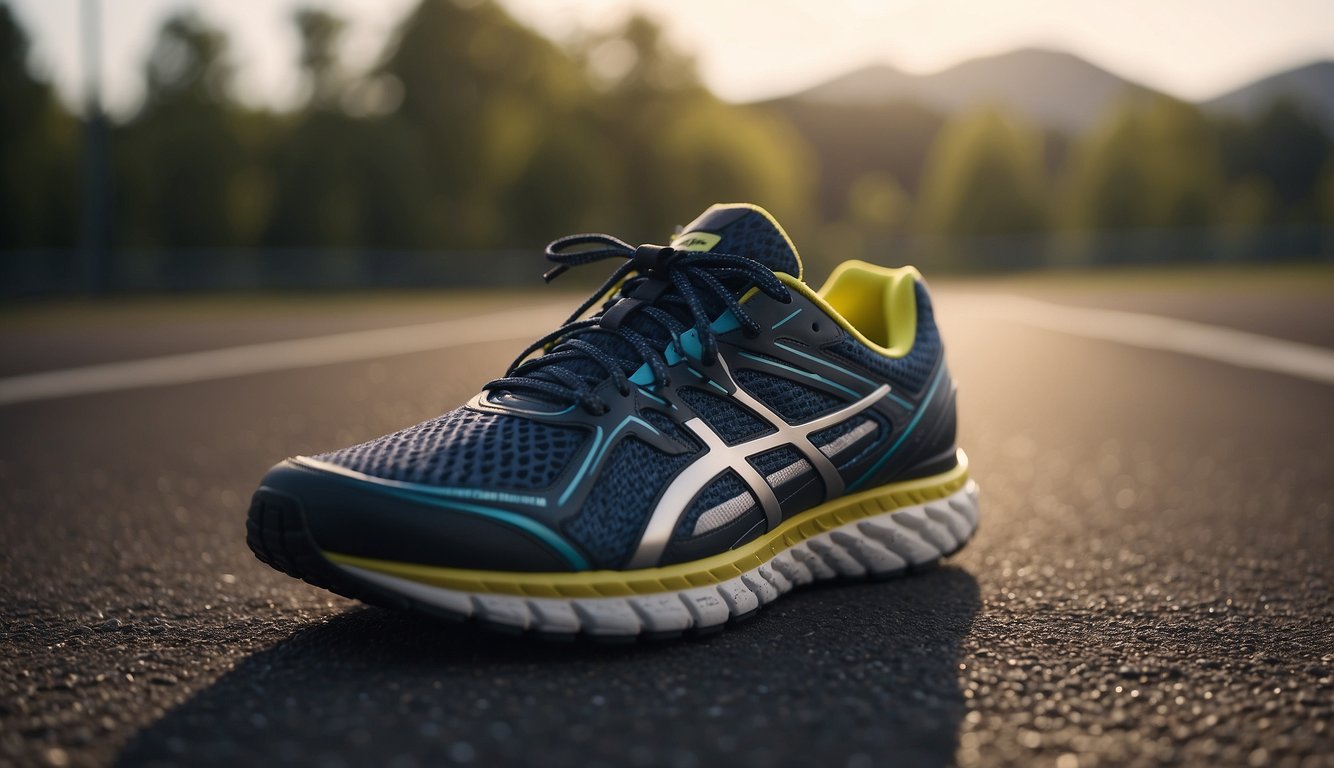As a runner, I know that a good pair of running shoes can make all the difference in my performance and comfort. But have you ever stopped to wonder what makes a running shoe comfortable and high-performing? In this article, I’ll dive into the anatomy of a running shoe and explore how each part contributes to both comfort and performance.

The first part of a running shoe that comes to mind is the upper – the part of the shoe that encases your foot. But did you know that the toe box, which houses your toes, is a crucial part of the upper that can greatly impact your comfort? Additionally, the midsole, outsole, and heel counter all play important roles in providing cushioning, support, and stability during your run. By understanding how each part of a running shoe contributes to your overall comfort and performance, you can make an informed decision when selecting your next pair of running shoes.
Let’s take a closer look at the anatomy of a running shoe and how each part impacts your running experience. From the upper to the outsole, we’ll explore how each component of a running shoe contributes to both comfort and performance, backed up with data-driven examples. By the end of this article, you’ll have a better understanding of what makes a great running shoe and how to choose the right pair for your individual needs.
Key Components of Running Shoes
When it comes to running shoes, there are several key components that are essential for both comfort and performance. In this section, I will discuss the most important features of running shoes that you should consider when making your purchase.
Upper and Its Elements
The upper of a running shoe is the part that covers the foot and is usually made of a fabric or leather material. It is important that the upper is breathable to allow air to circulate and keep the feet cool and dry during exercise. Mesh and knit materials are popular choices for the upper due to their ventilation properties.
The upper also includes the tongue, which is the padded flap that sits under the laces and helps to protect the top of the foot from irritation. The toe box is another important element of the upper, as it provides space for the toes to move and prevents discomfort and blisters.
Midsole Mechanics
The midsole is the layer of cushioning between the upper and the outsole of the shoe. It is responsible for providing comfort and support during running. There are several materials that can be used for the midsole, including EVA, gel, and polyurethane. Each material has its own properties, such as energy return and durability.
Stability is an important factor to consider when choosing a midsole. Some shoes have a medial post, which is a denser section of foam on the inside of the shoe that helps to prevent overpronation. Arch support is also important for those with high arches.
Outsole Features
The outsole is the bottom layer of the shoe that comes into contact with the ground. It is responsible for providing traction and grip on different types of terrain. Rubber is a popular material for the outsole due to its durability and grip.
The tread pattern on the outsole is also important, as it can affect the shoe’s performance on different surfaces. Carbon rubber and blown rubber are two types of rubber that are commonly used for outsoles. Trail running shoes often have a more aggressive tread pattern for better grip on uneven terrain.
Insole and Comfort
The insole, also known as the sockliner, is the removable cushioned layer inside the shoe that provides additional comfort. It can also be replaced with custom orthotics if necessary. The insole helps to absorb impact and provides some arch support.
When it comes to comfort, it is important to find a shoe that fits well and provides a secure fit. The perfect fit will prevent discomfort and blisters during exercise. The insole and upper should work together to provide a comfortable and supportive fit.
In conclusion, the key components of a running shoe are the upper, midsole, outsole, and insole. Each component plays an important role in providing comfort and performance during exercise. It is important to consider factors such as stability, traction, and fit when choosing a running shoe.
Enhancing Performance and Fit
Design for Different Terrains
When looking for a running shoe, it is important to consider the type of terrain you will be running on. Trail running shoes are designed for uneven and rough terrain, while racing shoes are designed for flat and smooth surfaces. Shoes with a good grip are important for running on dirt or debris, while shoes with better traction are important for running on slippery surfaces.
Shoe Fit and Foot Types
Finding the right fit for your foot type is crucial for a comfortable and effective running experience. Different foot types require different types of shoes, such as neutral shoes for those with a normal foot arch, stability shoes for those with a low arch, and motion control shoes for those with a flat foot. Pronation, or the inward rolling of the foot, also plays a role in shoe selection. Overpronators need shoes with added stability, while neutral runners can benefit from shoes with more responsiveness.
Preventing Injuries and Discomfort
Wearing the wrong shoes can lead to blisters, injuries, and discomfort. It is important to choose shoes that provide adequate protection for the ankles and Achilles tendon. Shoes that are too tight can cause blisters, while shoes that are too loose can cause excessive movement and lead to injuries. Choosing the right shoe for your foot type and running style can help prevent injuries and discomfort.
Overall, finding the right running shoe can greatly enhance your performance and running experience. By considering the terrain, foot type, and injury prevention, you can find a shoe that provides balance, strength, and motion control for a comfortable and effective run.

